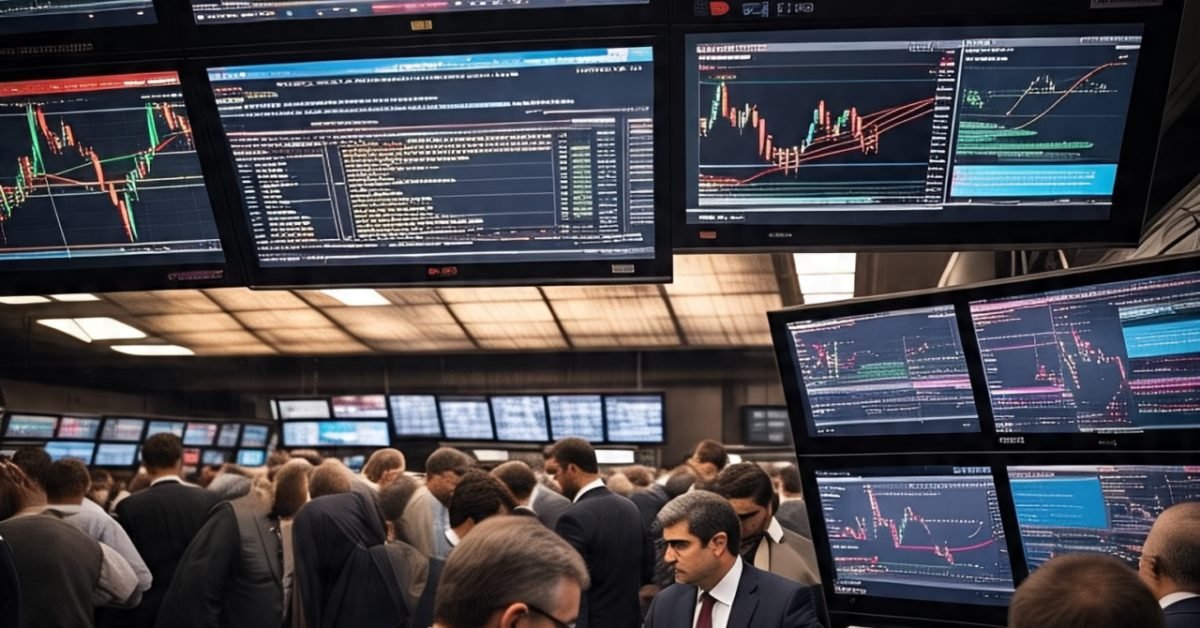Gulf Markets Mostly Rise Amid Iran Ceasefire Hopes and Growing Expectations of US Rate Cuts

Table of Contents
Gulf Markets Rebound to Pre-Conflict Levels
Gulf stock markets made solid gains on Sunday, as easing geopolitical tensions in the Middle East and rising hopes for interest rate cuts in the United States renewed investor confidence. With the Iran-Israel ceasefire holding firm, and expectations mounting for a more accommodative U.S. monetary policy, regional indices are now recovering to levels seen before the recent conflict escalation.
Saudi Arabia’s TASI Rises Sharply
The Saudi Stock Exchange’s main index (TASI) climbed 1.2%, making a strong comeback. Major banking stocks led the charge, with:
Al Rajhi Bank surging 2.3%
Riyad Bank rallying by 3.3%
The bullish momentum was further supported by upbeat forecasts from the International Monetary Fund (IMF). On Thursday, the IMF revised Saudi Arabia’s 2025 GDP growth outlook upward from 3% to 3.5%, citing:
Increased demand for government-led development projects
A more optimistic oil market supported by OPEC+ production strategies
OPEC+ to Gradually Increase Oil Output
A Reuters report revealed that OPEC+ is preparing to boost oil output by 411,000 barrels per day starting August, aiming to reclaim lost market share. However, Saudi Aramco, the state-owned oil behemoth, remained flat, indicating cautious investor sentiment around oil prices and global demand dynamics.
Qatar Stock Index Posts Solid Gains
Qatar’s stock index (QSI) gained 0.8%, with a broad-based recovery across most sectors. Notably:
Qatar National Bank added 1.2%, contributing to the upward momentum
The positive mood reflects increasing optimism around global rate cuts and regional stability, offering a tailwind for banking and infrastructure-heavy sectors in Qatar.
US Monetary Policy in Focus
Investor focus also shifted towards the U.S. Federal Reserve, with growing speculation that former President Donald Trump, if re-elected, may opt to replace the current Fed chair. Market chatter suggests this could usher in a more dovish approach to interest rates.
Such a shift holds high significance for Gulf economies, where currencies like the Saudi riyal and UAE dirham are pegged to the U.S. dollar. Any easing by the Fed could:
Stimulate liquidity in the region
Encourage foreign investment
Reduce borrowing costs for governments and corporates
Egypt Joins the Rally
Beyond the Gulf, Egypt’s EGX30 index rose 0.6%, with:
Commercial International Bank (CIB) gaining 1.2%
This marked Egypt’s participation in the wider regional rally, as investors began pricing in improved sentiment and potential cross-border investment flows.
Regional Outlook: Stability + Lower Rates = Bullish Sentiment
As the Middle East breathes a sigh of relief following the Iran-Israel ceasefire, and as the U.S. looks likely to pivot towards looser monetary policy, Gulf markets appear poised for sustained growth.
Key drivers for the week ahead include:
Further updates from OPEC+ on production levels
Signals from the U.S. Federal Reserve regarding rate cuts
Developments in U.S. presidential race that could influence Fed leadership
Expert Takeaway
“With geopolitical risks temporarily subdued and the IMF showing more confidence in Saudi Arabia’s outlook, the region is entering a sweet spot,” said a regional analyst. “If U.S. rate cuts come through, it will act as a double boost for equity markets here.”
Conclusion
The Gulf markets’ rebound marks a hopeful shift toward economic normalcy and growth, powered by geopolitical easing and global monetary optimism. With Saudi Arabia leading the way, and other regional markets following suit, investor appetite appears to be returning just in time for what could be a pivotal financial quarter.
As OPEC+ gears up to increase supply and U.S. rate cuts loom, investors will be keeping a close watch. But for now, green is the color across the Gulf bourses.
FAQs
1. Why did Gulf markets rise on Sunday?
The markets rose due to easing geopolitical tensions (Iran-Israel ceasefire) and growing hopes of U.S. interest rate cuts, which boost investor confidence.
2. Which stocks performed the best in Saudi Arabia?
Al Rajhi Bank (+2.3%) and Riyad Bank (+3.3%) were top performers, pushing the main index higher.
3. What is the significance of the IMF’s forecast for Saudi Arabia?
The IMF upgraded Saudi Arabia’s 2025 GDP growth to 3.5%, citing strong government projects and oil policy — a positive sign for economic momentum.
4. How will U.S. interest rate cuts impact Gulf markets?
Rate cuts could lower borrowing costs and boost liquidity in Gulf countries, especially those with currencies pegged to the U.S. dollar.
5. What does the OPEC+ oil output plan mean for investors?
OPEC+ plans to increase production by 411,000 barrels/day in August, signaling confidence in demand recovery and potential support for energy sector stocks.
